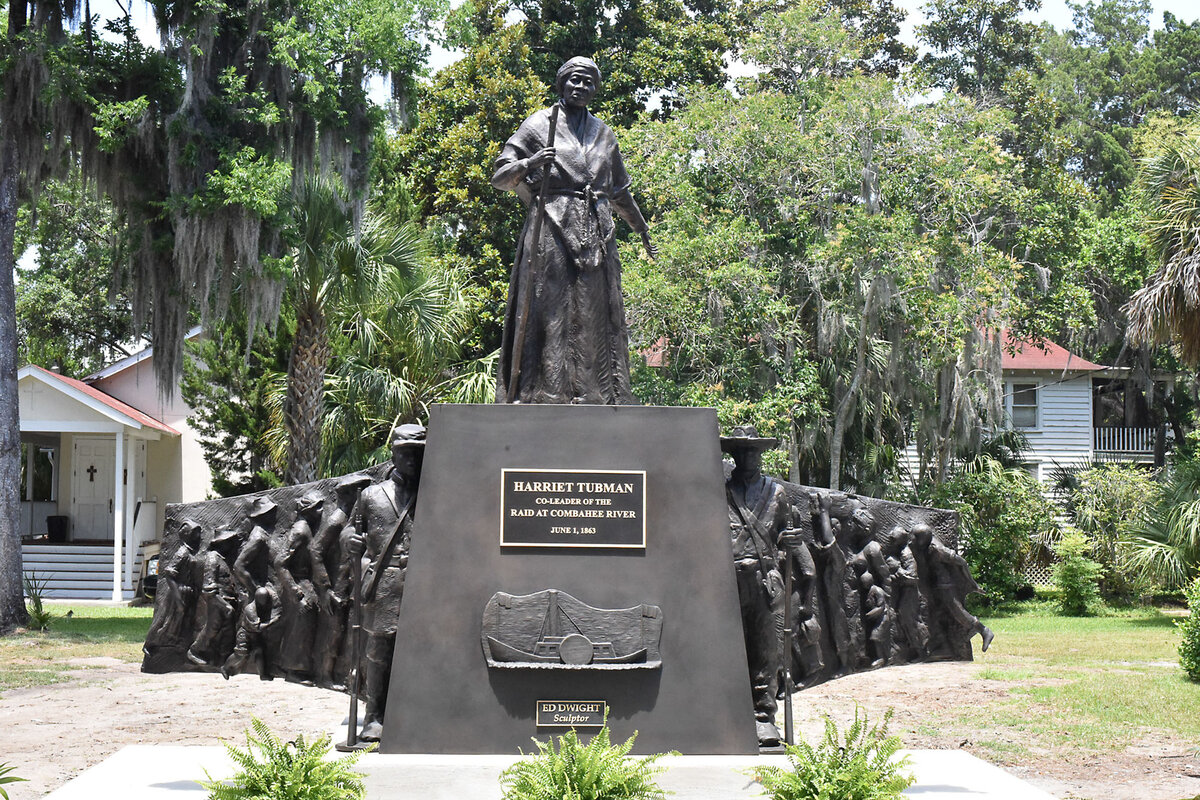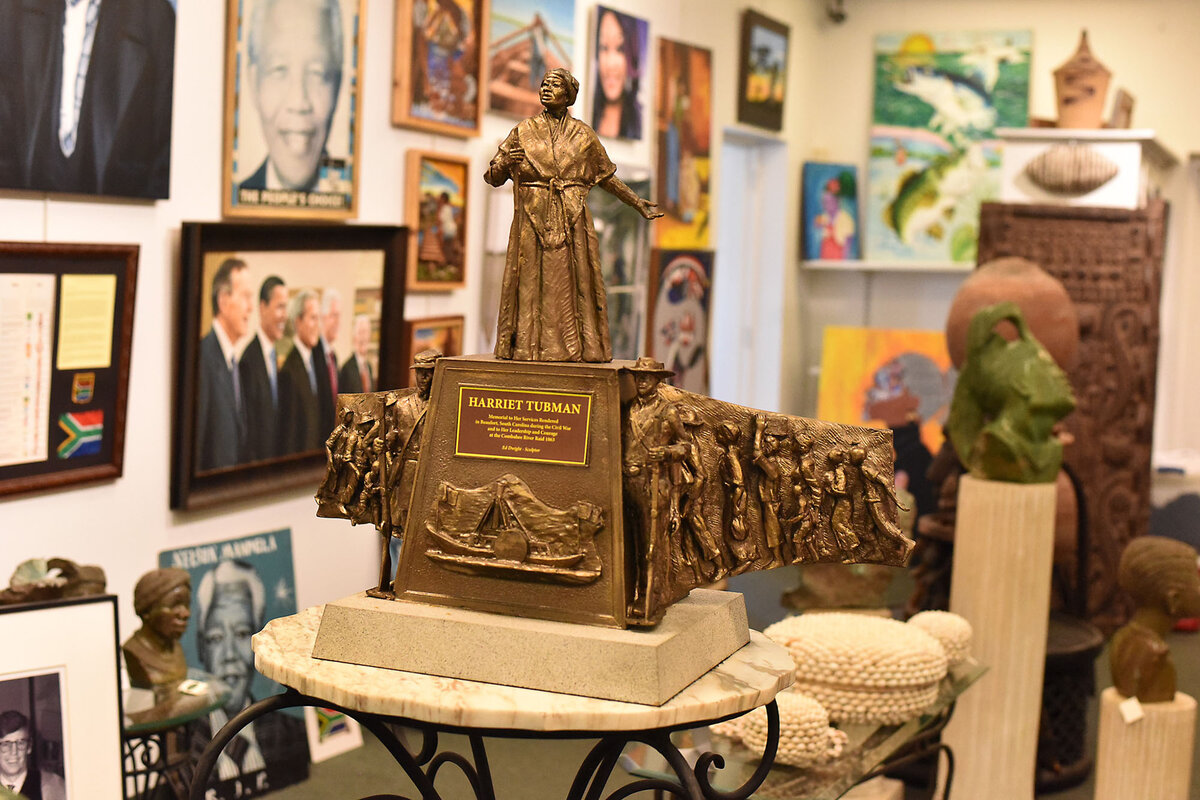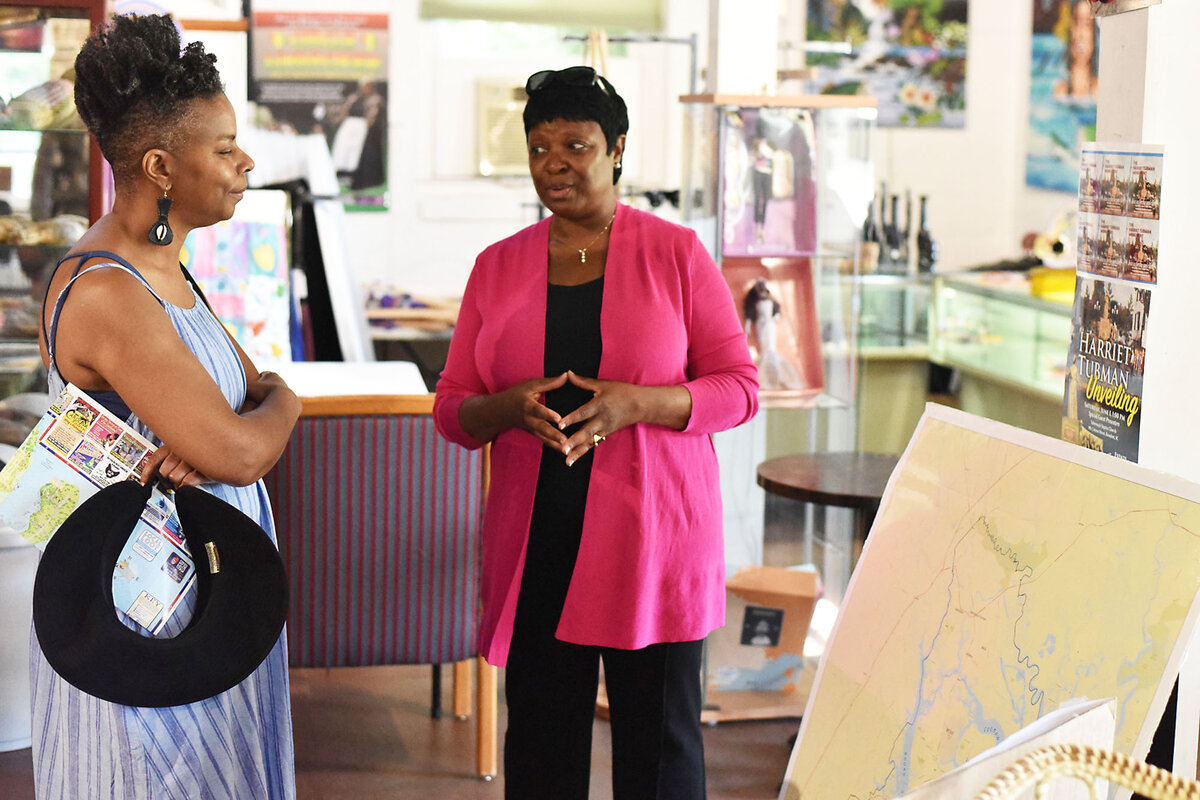A Civil War hero got a new statue. Her name is Harriet Tubman.
Loading...
| Beaufort, S.C.
The Rev. Kenneth Hodges is an intentional man, with a photographer’s eye and a preacher’s cadence. It seems deficient to call him a public servant. The pastor of the historic Tabernacle Baptist Church, and a former South Carolina state representative, he is a caretaker of legacy.
Eight years ago, on a campus with the bust and burial site of the incomparable Robert Smalls, Mr. Hodges felt something was missing. And so a monument to one of America’s greatest heroes was born.
“There was a tremendous void – the void of sharing the story of Harriet Tubman’s Civil War experiences. ... A lot of people did not know the story. A lot of people didn’t believe the story,” Mr. Hodges said during an interview at the church. “As a result, we felt that we needed to do something to illuminate her presence, her contributions, and her involvement in Beaufort during the Civil War.”
Why We Wrote This
A story focused onCivil War statues have been in the news in recent years. But a new one in Beaufort, South Carolina, honors a different kind of military leader – and the story only starts there.
That void was profoundly filled on June 1. A larger-than-life monument of Tubman was unveiled here in Beaufort, South Carolina. She was the second Black woman from the antebellum era being celebrated that week. Two days earlier, on May 29 in Akron, Ohio, a legacy plaza and statue for Sojourner Truth were revealed to the public, a nod to Truth’s “Ain’t I A Woman” speech, which she gave on May 29, 1851.
The Tubman monument in Beaufort is a commemoration of her leadership in the Combahee River Raid. On June 2, 1863, Tubman became the first woman to lead a major military operation in the United States. She led 150 Black Union soldiers into war, and their efforts led to the liberation of 700 people. While Tubman is credited as a co-leader with Union Col. James Montgomery, Mr. Hodges holds Tubman’s work in the highest regard.
“We know that she didn’t do it alone, but even articles that were written right after the raid said that the raid was initiated and inspired and led by Harriet Tubman,” he says. “Sometimes, we say that Harriet Tubman was a co-leader, but there’s another perspective on that as well. She was a co-leader because she believed that her leader was God Almighty. He led the raid. He inspired her in everything that she did. And when she saw those persons running toward the gunboats off of the plantation, she said, ‘It reminded me of the children of Israel coming out of Egypt.’”
The first weekend in June was a time for heroes to receive their due rewards. The sculptor of the Tubman monument was Ed Dwight. Just a few weeks ago, the former Air Force test pilot became the oldest person in space. That only tells part of the story for the candidate to become the first Black astronaut. Mr. Dwight was nominated by President John F. Kennedy in the 1960s but was kept out of the space program by racism. He went on to lead the life of a Renaissance man, with turns working at IBM, writing books, and securing a master’s degree in sculpture.
Mr. Dwight’s interpretation of Tubman depicts her as a woman who looks toward the heavens. But her roots are intertwined throughout Beaufort and across the country. She is a central figure to both the Reconstruction era and Gullah culture. Only two blocks down from Tabernacle is the Reconstruction Era National Historical Park, where rangers offer walking tours and a detailed history that is under siege in public schools.
Laura Waller, the superintendent at the park, says relationships between Tabernacle and the park are essential to storytelling and community development.
“A colleague of mine, Keena Graham, who works in Mississippi, says we’re not national parks of acres, we’re national parks of ideas, and we can’t share those ideas without the community,” Ms. Waller says. “Harriet Tubman is significant, and we want her role here [in Beaufort] to be recognized. ... Also, stories like hers, maybe not on that scale, but stories of courage, of hard work, of change-makers, exist in every community and ZIP code. Hopefully, this is the start of us finding them and getting to know them.”
Tubman is also a central figure in Gullah culture, which prioritizes the heritage and lineage between Africa and four states: South Carolina, North Carolina, Georgia, and Florida. Mahoganee Amiger, a native of coastal South Carolina and ambassador of Gullah Geechee culture, performed at the monument unveiling. She says Tubman “represents the best of we.”
“What Harriet Tubman means to our Gullah Geechee culture and community is ultimately what she means globally, and that is she represents a beacon of freedom,” Ms. Amiger, who performs under the name The Mahoganee Xperience, says via email. “Harriet’s life, journey and decisions continue to spark and give birth to more freedom fighters. ... Harriet’s legacy has also impacted me creatively in a way that allows me to dig deeper, to go past my ancestral pain and harness the energy of my ancestors.”
That energy is ambient – educational and soulful. A visit to The Gullah-Geechee Cultural Visitors’ Center at LyBensons’ Gallery, which Mr. Hodges owns, has displays of his photography. There’s a stunning portrait of Rosa Parks he took, as well as photos of former President Barack Obama, former South African President Nelson Mandela, and Sammy Davis Jr.
The visitors center is just one of the jewels on this strip of St. Helena Island that carries the name of Martin Luther King Jr. A few minutes down the road, the Penn Center, the first school in the South for formerly enslaved Africans, is open and offering tours. Across the street from the visitors center is Gullah Grub, a restaurant that has been featured on culinary series such as Netflix’s “High on the Hog.”
The importance of cultural centers such as this one is made clear through a dialogue between Yassie Hodges – Mr. Hodges’ sister, who cares and curates at the center with a wealth of knowledge – and Kimberly Mitchell, a native of Washington, D.C., who came to learn more about her roots.
“I was telling someone one day that I wanted to make it to Africa, and she said, ‘Don’t even worry about it; just go down to Charleston, South Carolina,’” Ms. Mitchell says. “So I’ve been in South Carolina for four days to see about Gullah culture, get information of where we arrived and what took place.”
Ms. Mitchell’s sense of fulfillment is palpable, and she makes sure to pay homage to those before her.
“See, the things we’re supposed to know, the spirit and the ancestors will always ...” and then she stops, as if struck by an epiphany: “If you seek, you will find. I’m down here seeking, and I’m finding.”









